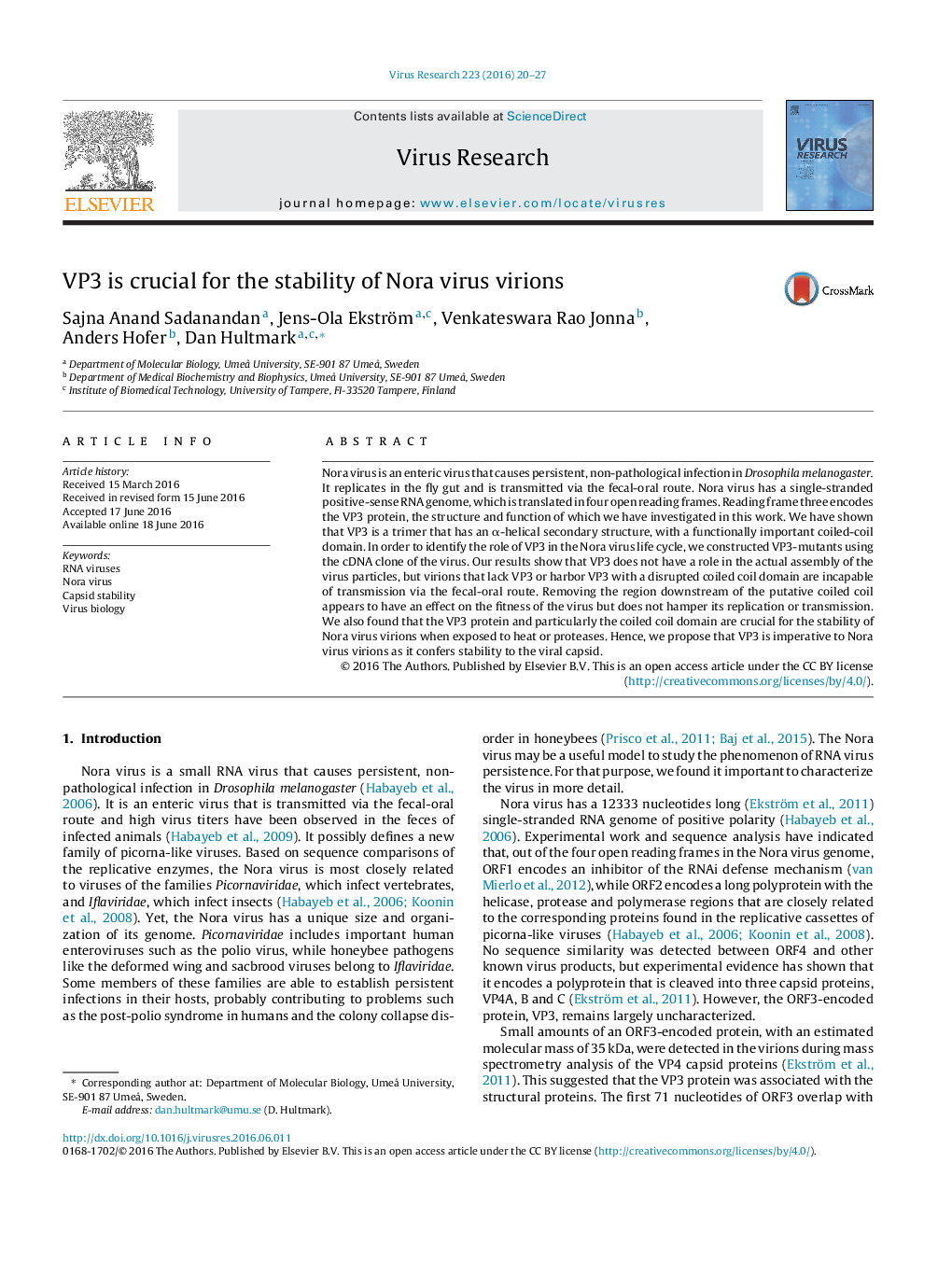| Article ID | Journal | Published Year | Pages | File Type |
|---|---|---|---|---|
| 6141998 | Virus Research | 2016 | 8 Pages |
â¢Nora virus VP3 forms trimers with α-helical secondary structure.â¢The putative coiled coil in VP3 is conserved among Nora viruses and indispensable for successful fecal-oral transmission.â¢Nora virus virions are not stable without the VP3 protein.
Nora virus is an enteric virus that causes persistent, non-pathological infection in Drosophila melanogaster. It replicates in the fly gut and is transmitted via the fecal-oral route. Nora virus has a single-stranded positive-sense RNA genome, which is translated in four open reading frames. Reading frame three encodes the VP3 protein, the structure and function of which we have investigated in this work. We have shown that VP3 is a trimer that has an α-helical secondary structure, with a functionally important coiled-coil domain. In order to identify the role of VP3 in the Nora virus life cycle, we constructed VP3-mutants using the cDNA clone of the virus. Our results show that VP3 does not have a role in the actual assembly of the virus particles, but virions that lack VP3 or harbor VP3 with a disrupted coiled coil domain are incapable of transmission via the fecal-oral route. Removing the region downstream of the putative coiled coil appears to have an effect on the fitness of the virus but does not hamper its replication or transmission. We also found that the VP3 protein and particularly the coiled coil domain are crucial for the stability of Nora virus virions when exposed to heat or proteases. Hence, we propose that VP3 is imperative to Nora virus virions as it confers stability to the viral capsid.
